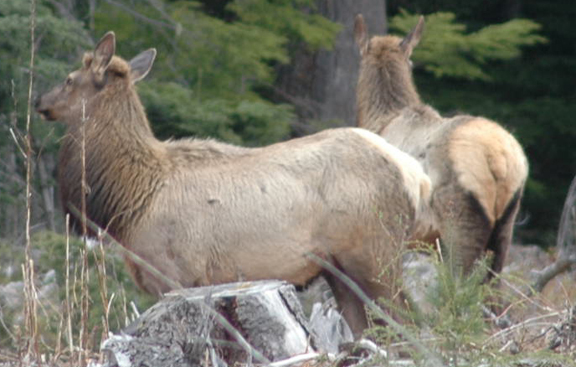
![]()

Photo 1: Roosevelt Elk grazing at th edge of a clear cut in spring un the Memekay River valley.
Roosevelt Elk: Cervus canadensis roosevelti
Roosevelt Elk, which are also known as Wapiti, are the largest member of the ungulate family, even larger than the Rocky Mountain Elk found on the mainland. Roosevelt Elk can be found in great herds on Vancouver Island and in parts of the United States. Three small herds have also been transplanted to the mainland of British Columbia from Vancouver Island herds. A distinguishing feature of Roosevelt Elk is the large white-tan patch on their rump.
Calves are born in May and June. The mother (called a cow) usually leaves the herd to give birth in isolation. Around four weeks later, she will return to the herd with her calf. The rut begins in the early fall with the bull 'bugling' his presence to the cows. Although a herd may have several bulls, there is a dominant bull that will defend his harem against challengers. A challenge usually involves a clashing of antlers. If a young bull challenges the dominant bull and fails, he will be ousted from the herd.
Antlers are shed and grown again each year. The new antlers are sport a green velvety membrane, which dries up in the late summer. The bull elk then rub their antlers to get rid of this old membrane. First year males will have a spike. Second year males typically have a 'raghorn' with three to six points. Third year males typically have six points per antler and will often retain this throughout their life, only adding weight and girth.
